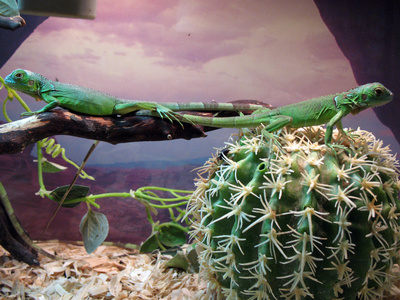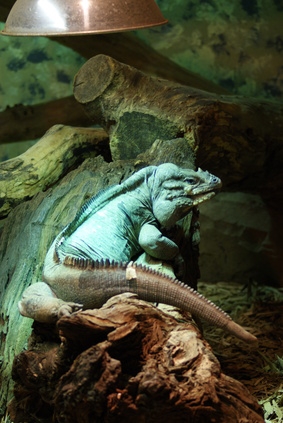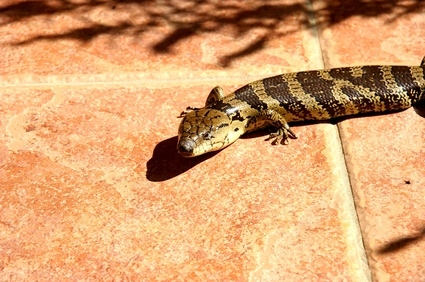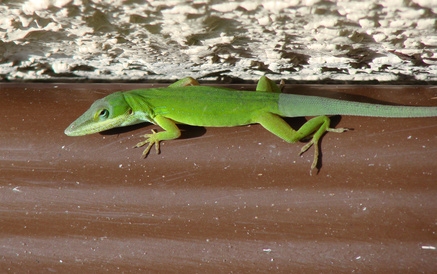
Natural Habitat of a Lizard. There is a diverse range of species of lizards that have the ability to survive in a variety of habitats. New World Encyclopedia states, "Encompassing 40 families and about 3,000 species, lizards offer a tremendous variety in color, appearance and size." The wide array goes from small household lizards to the largest carnivorous lizards that reside in marshes, forests and deserts. Lizards are mostly found in harsh climatic conditions where human survival is difficult, and this is predominantly the reason that they are saved from human incursions.

Desert lands are the most common habitat for lizards; most of the species of lizards are found on barren land. The harsh environment of the desert makes it difficult for large populations of humans to inhabit these arid areas, but lizards and other reptiles have adapted to the heat and lack of water in such places. Although the lizards prefer warm temperatures, in extremely hot weather they have a tendency to hide during the day and to reveal themselves at night when the weather is cool.
Many of the species of lizards can be found in the rain forests, as the temperature is warm and humid; quite suitable for these cold-blooded reptiles. Madagascar day geckos and chameleons are some of the lizards found in the rain forests. These lizards are mostly green in color, enabling them to be inconspicuous among the mostly green environment of the forest. They are well adapted for the life in trees and have tail and claws that help in holding branches.
There is one species of lizard known as the Komodo dragon that is native to the islands of Indonesia. These islands include Komodo, Flores, Rintja, Padar, Nusa and other neighboring islands. The Komodo is the largest living species of lizards and is adapted to the severe climate of these islands. They can feed on a wide array of animals ranging from insects to snakes. Another large island lizard, the La Palma giant lizard, lives on La Palma in the Canary Islands. Other island lizards include the island night lizard and island fence lizard, which are native to Islands of California.
Some species of lizards live near marshes, swamps or wetlands and swim in water. The Paraguayan Cayman lizard is one that swims in water due to its strong tail. Marine iguanas that live in the Galapagos Islands need to lay eggs in the oceans or sandy areas. They largely feed on algae that are found in the Galapagos Islands. Many kinds of land iguanas and lava lizard are also found in the Galapagos Islands. Iguanas have learned to assimilate to the surroundings and have inhabited various parts of the globe.
Lizards dwell in a wide range of environments and are found all over the world, except Antarctica and the Oceanic Islands. For example, the leopard gecko is found in south-central Asia. These lizards are adapted to the harsh, rocky, barren and dry areas of this region. The ace sprinters are native to American continents and can run on the surface of water.
 How to Breed Crickets for Lizards
How to Breed Crickets for Lizards
How
How to Breed Crickets for Lizards
How to Breed Crickets for Lizards
How
 List of Reptiles that have Spikes on their Tails
List of Reptiles that have Spikes on their Tai
List of Reptiles that have Spikes on their Tails
List of Reptiles that have Spikes on their Tai
 How to Tell If a Blue-Tongued Lizard Is Male or Female
How to Tell If a Blue-Tongued Lizard Is Male o
How to Tell If a Blue-Tongued Lizard Is Male or Female
How to Tell If a Blue-Tongued Lizard Is Male o
 How to Identify Female and Male Anoles
How to Identify Female and Male Anoles
How to Identify Female and Male Anoles
How to Identify Female and Male Anoles
 How to Keep a Wild Lizard
How to Keep a Wild Lizard
How to Keep
How to Keep a Wild Lizard
How to Keep a Wild Lizard
How to Keep
Copyright © 2005-2016 Pet Information All Rights Reserved
Contact us: www162date@outlook.com